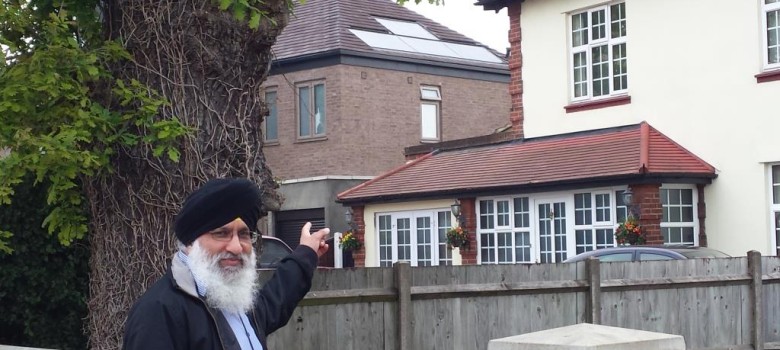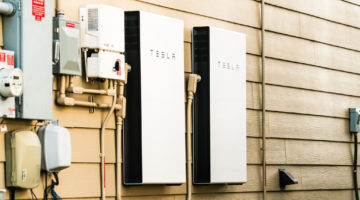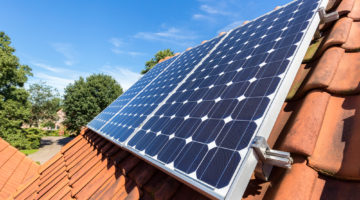
UPDATE: The Feed-In Tariff is now closed for new applications. To find out about the new scheme designed to replace it, click here.
The Feed-in tariff scheme (FITs) was introduced in April 2010 by the UK government to promote the deployment of small-scale renewable and low carbon electricity generation technologies as part of their obligation to meet the Renewable Energy Directive. The scheme is applicable to a number of technologies including PV, Wind, Hydroelectric and Anaerobic Digestion (AD) up to a maximum total installed capacity (TIC) of 5MW. The main aim of the feed-in tariff is to drive down the cost of those technologies by providing potential investors with the security to make long-term investments.
Previous Legislation in the UK
The 2009 Renewable Energy Directive had set a target for the UK to achieve 15% of its energy consumption from renewable sources by 2020. However, in 2010 the UK produced 6.5% of electricity from renewable sources, falling short of its 10% target and in 2011 it only reached 9.6%. Failure to meet the 2010 target raises concerns as to whether the UK will meet the legally binding EU target set for 2020, however the FIT was introduced to encourage uptake of these renewable sources.
The FIT scheme provides three financial Incentives:
-
Generation tariff
The energy supplier will pay a set rate for each unit (kWh) of electricity generated. The level of tariff is dependent on the technology and size of installation. Once registered, tariff levels are guaranteed and index- linked. This will be covered later in this section.
-
Export tariff
All technologies receive a further fixed rate for each unit of electricity supplied to the grid. Currently, it is estimated as 50% of the electricity generated.
-
Electricity bill savings
Electricity generated on-site will reduce the amount of electricity required from the grid resulting in reduced energy bills.
The scheme has been hugely successful in increasing the installed capacity generated from PV. In total over 500,000 properties have had solar PV installed since the launch of the FIT scheme.
The current FIT figures
The table below summarises the latest PV tariffs available for the different size solar PV installations up until the end of December 2015.
| Solar PV System size | Generation tariff | Export tariff | |||
| Eligibility date 1 Jul 2015 to 30 Sep 2015 | Eligibility date 1 Oct 2015 to 31 Dec 2015 | Eligibility date 1 Jul 2015 to 30 Dec 2015 | |||
| Higher rate (EPC band D or above) | Lower rate (EPC not band D or above) | Higher rate (EPC band D or above) | Lower rate (EPC not band D or above) | ||
| 4kW or under | 12.92 p/kWh | 5.94 p/kWh | 12.47 p/kWh | 5.94 p/kWh | 4.85 p/kWh |
| > 4kW – 10kW | 11.71 p/kWh | 5.94 p/kWh | 11.30 p/kWh | 5.94 p/kWh | 4.85 p/kWh |
| > 10kW – 50kW | 11.71 p/kWh | 5.94 p/kWh | 11.30 p/kWh | 5.94 p/kWh | 4.85 p/kWh |
| Stand-alone | 4.44 p/kWh | 4.28 p/kWh | 4.85 p/kWh | ||
If you imagine a 4kW system installed on a south facing roof (comprised of 16 x 250w solar panels), you could expect that to make approximately 3,800kWh of electricity per year. Under the current feed-in tariff not only can you use the electricity you produce in the home (meaning you don’t need to buy it from the grid), you will also be paid for every unit you generate.
That means you will be paid 3800kWh x 12.92p / kWh = £490.96 per year guaranteed for 20 years.
The big issue however is the Government is proposing to slash the generation tariff (part of the feed-in tariff) by 87% down to just 1.63p/kWh.
The end of the solar Feed-in Tariff is nigh?
The Government is proposing to reduce the FIT by as much as 87% come January 1st 2016 – so for a ‘household’ sized system the payment would reduce from 12.92 p/kWh down to just 1.63 p/kWh.
So while under the current feed-in tariff, the annual payment of the 4kW system described above would be just shy of £500, under the proposed feed-in tariff from Jan 2016, this payment would be just £60 per year – taking the total return to just £1,200.
Obviously the calculations above don’t take into account the export tariff (where you are paid for exporting electricity back to the grid) and also the energy savings one could expect because of the ability to use the electricity produced in the home rather than buying it from the grid – however the proposed reductions will have a huge negative impact on the amount of solar that gets installed. In fact DECC have admitted that the proposed changes to the feed-in tariff rates could wipe 6GW off UK renewable generation capacity by 2020/21.
With nuclear power plants and coal power plants closing at a rate of knots, it is going to be interesting to see what the Governments next move is to try and maintain the headroom between the UK’s energy supply and demand. Obviously if the headroom disappears and we have a cold winter, then there will be serious repercussions. For individuals, our advice is very simple – if you do want to get solar PV installed on your property, act before the cuts come into play. By bringing forward your solar PV plans by just a few months the improved payback of the system will be very significant.
How has the Feed-in tariff changed over time?
When the FIT scheme was initially launched, it was extremely generous – the figures are shown in the table below. Essentially though a homeowner could install solar panels on their roof and have received a guaranteed payment of 43p per unit of electricity (kWh) produced from their system and this payment was guaranteed for the next 25 years.
| FIT tariff rates announced by DECC on 31st October 2011. | |||
| Band | Current tariff | Proposed tariff | Reduction |
| (kW) | (p/kWh) | (p/kWh) | (%) |
| >4 kW (new build) | 37.8 | 21 | 44 |
| >4 kW (retrofit) | 43.3 | 21 | 52 |
| >4 >10 kW | 37.8 | 16.8 | 56 |
| >10 >50 kW | 32.9 | 15.2 | 54 |
| >50 kW >100 kW | 19 | 12.9 | 32 |
| >100 kW >150 kW | 19 | 12.9 | 32 |
| >150 kW >250 kW | 15 | 12.9 | 14 |
In March 2012 there was the first major adjustment to the feed-in tariff. It was effectively halved overnight – down to 21p/kWh. The Government made this adjustment to reflect the fact that the price of installing a solar PV had halved so the return from the Feed-in tariff didn’t need to be as generous.
Over the following years the feed-in tariff was continually reduced to reflect the falling cost of installing solar systems. The table below shows the changes from 2013 to early 2015.
| Feed-in-tariff differences | |
| Year | Price |
| 2013 | 15.44 p/kWh |
| 2014 | 14.90 p/kWh |
| 2015 | 14.40 p/kWh |
The reason for the feed-in tariff drops were basically to reflect the falling cost of getting a solar PV system installed, with the cost of a system now just half what it was 3 years ago.
If you are looking to install solar act fast!
So if you are thinking about installing Solar PV on your property then now really is the time to do it.
If you wait until after December 2015, then your return of investment is dramatically reduced and although you can still benefit from the free electricity produced it is certainly not as tempting. If you are interested in installing solar PV in your property fill in the form below – we are currently offering £300 off all our Solar PV installs before December 2015.
UPDATE: The Feed-In Tariff is now closed for new applications. To find out about the new scheme designed to replace it, click here.












Am I right or wrong in understanding that the latest proposed changes will NOT affect the “guaranteed and index linked” FIT payments associated with solar systems already installed in past years? Tks for clarification
Yes Iain,
Current installed systems are not affected. All the more reasons to install now!
Do the draft proposals change the contractual payments for existing installations, or only for new installations?
Philip Sowden
Hi philip,
Existing installations will not be affected. The government can’t break out of their contract with you that easily.
my system was installed in January 2014 with a feed in tariff of 14.9
my energy supplier told me today i will only now get 0.87
Surely they cannot do this as the Installation date determines the FIT
That sounds very strange Jane – provided you made the application back in January 2014 then the payments will be in place for 20 years from that date at the rate you initially got (rising with inflation!).